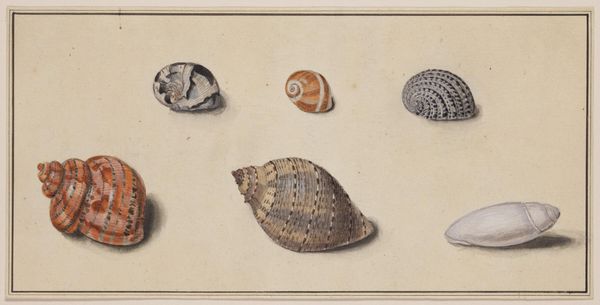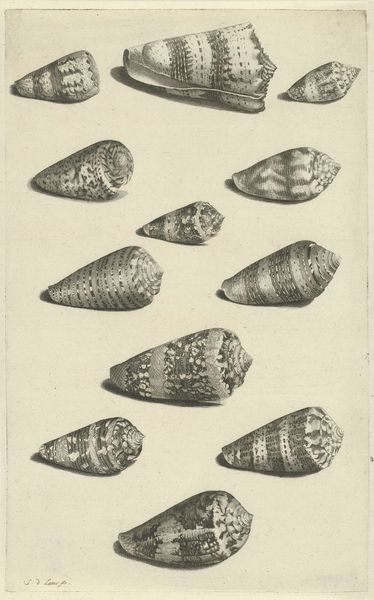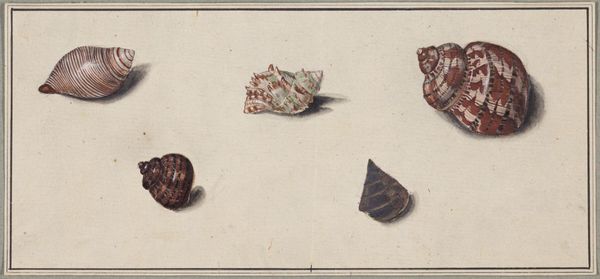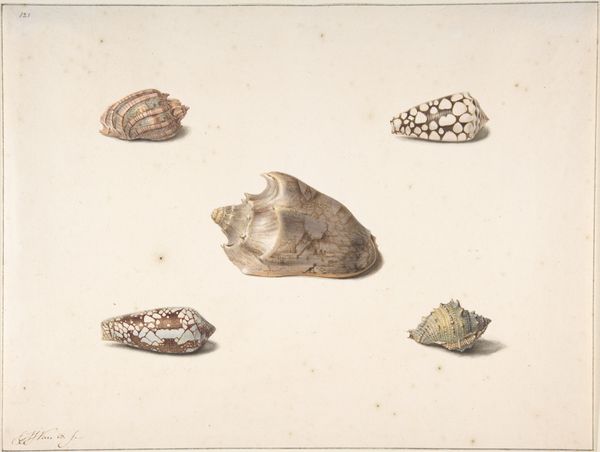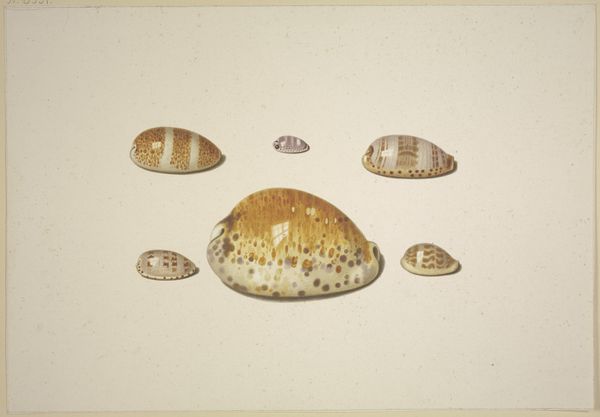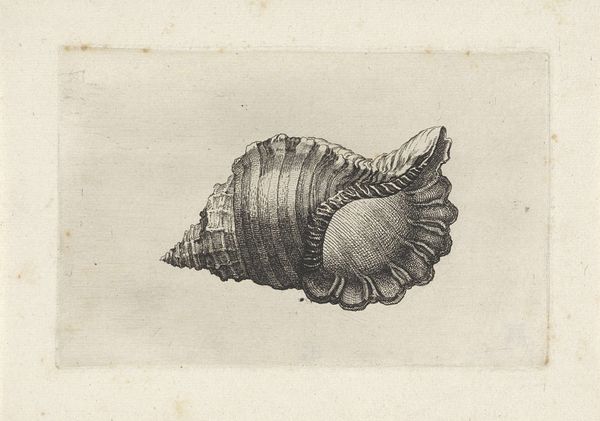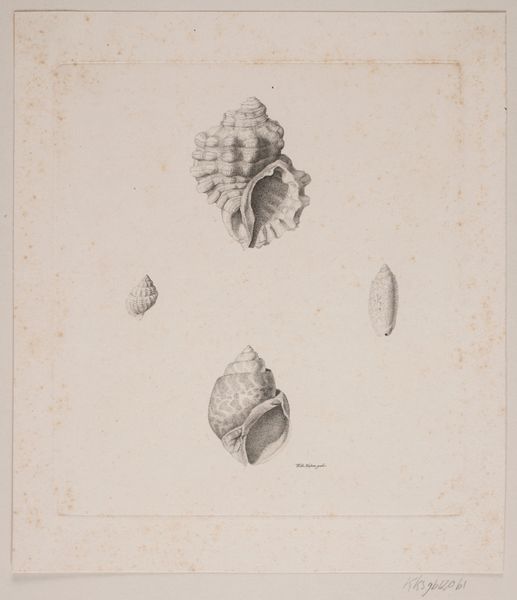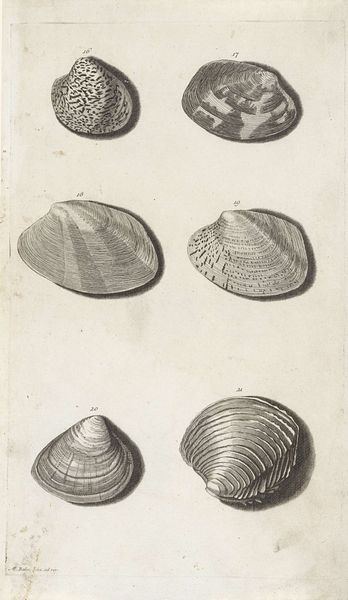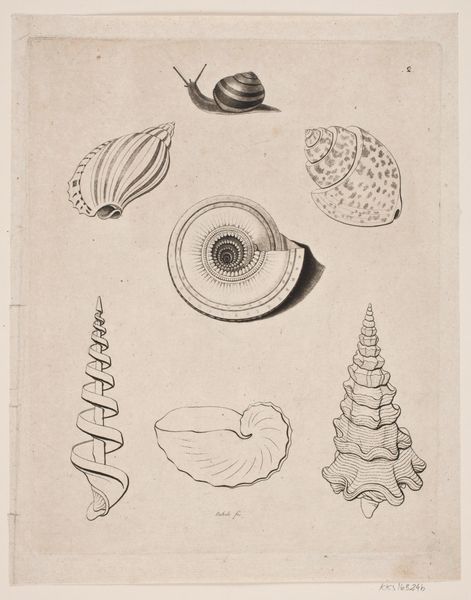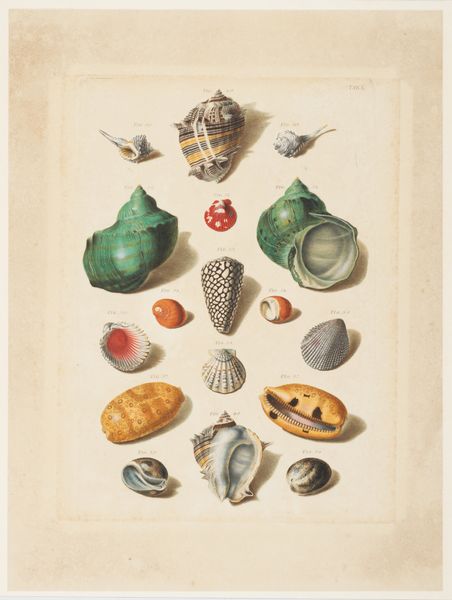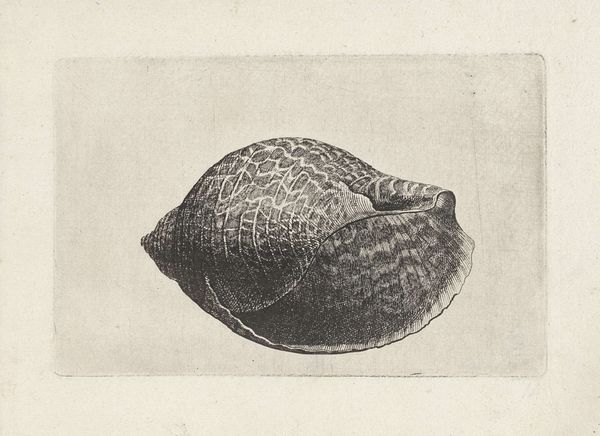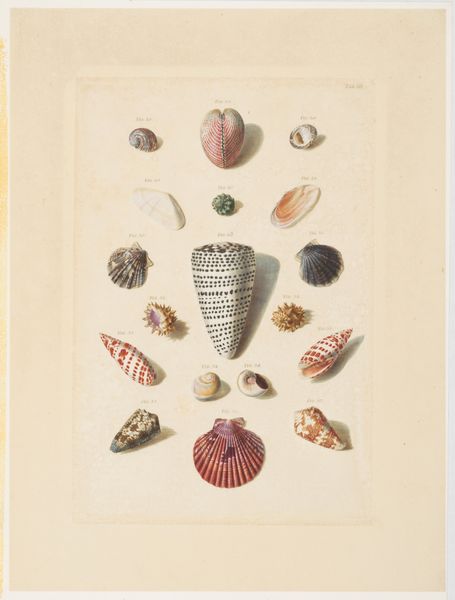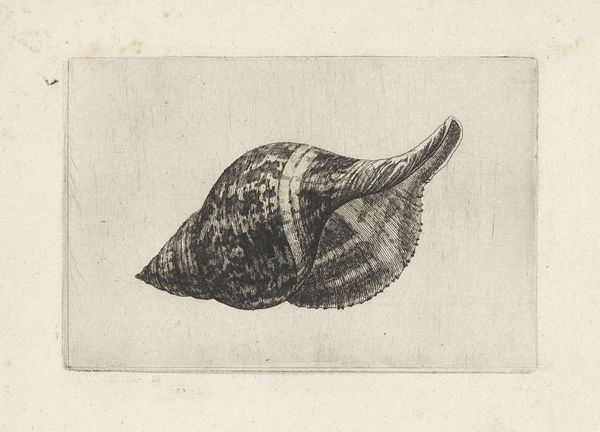
drawing, pencil
#
pencil drawn
#
drawing
#
pencil drawing
#
pencil
#
realism
Dimensions: height 156 mm, width 199 mm
Copyright: Rijks Museum: Open Domain
Curator: Before us, we have "Studieblad met diverse schelpen," or "Study Sheet with Various Shells," a pencil drawing completed sometime between 1824 and 1900 by Albertus Steenbergen. Editor: My first impression is quietude. The shades of gray and soft pencil strokes create such a muted, calming sensation. Curator: Calm, yes, and deeply observant. Consider the labor involved in representing each shell with such attention. Steenbergen's work invites us to consider not just the beauty, but also the natural process and transformation involved in forming these materials, each unique, yet also bearing the traces of an environment. Editor: It also reminds me that sketching things like shells was, for many, an exercise of patience but also a window into deeper scientific understanding. Before cameras, hands preserved what eyes observed. The almost photorealistic accuracy also evokes, for me, a deep feeling of nostalgia. Imagine collecting these yourself. Curator: These shells weren’t just objects; they were commodities, collected and traded, imbued with value far beyond their natural composition. Think of them as markers of exploration, desire, and even colonial power—resources moved across the globe. How do these shapes translate when divorced from the social narrative and placed on the art market? Editor: They are tiny universes, echoing larger geological processes. In fact, for the artist I sense also an almost devotional concentration—like meditating on life's essential structures. Maybe this drawing offers also a perspective outside capitalist exploitation? Curator: That's generous, and maybe possible, yet artists cannot detach their own means of productions and economic positions when entering markets... The very paper and pencil are already inscribed with relationships of labor. It asks: Can true escape ever be depicted? Editor: Well, whether this image offers actual escape or a beautiful tension, it also functions as a looking glass, where small things suggest larger worlds of aesthetic, scientific, or economic forces—much like the faint indentations in a pencil, perhaps? Curator: Exactly. Thanks for joining me to examine that further! Editor: The pleasure was all mine!
Comments
No comments
Be the first to comment and join the conversation on the ultimate creative platform.
